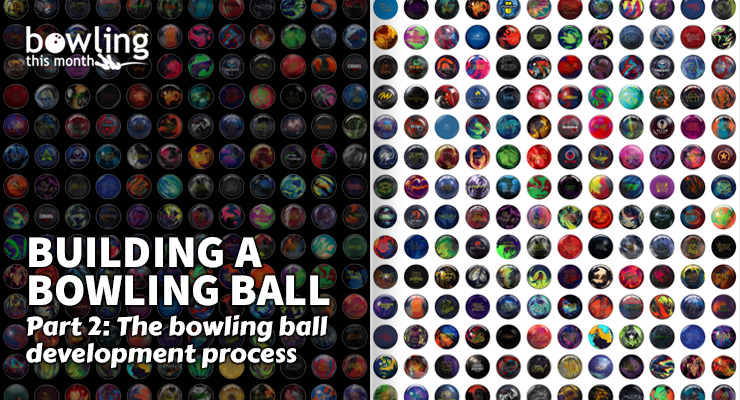Article Contents
- 1. What we’re looking at
- 1.1. But first…is it a weight block or a core?
- 2. A new ball for the marketplace: wanted or needed?
- 3. The weight block
- 4. The coverstock
- 5. Controlling ball weight
- 6. Pin locations and PSAs
- 7. Balance holes, static weights, and you
- 8. Colors
- 9. Now it’s time to play “Name That Ball!”
- 10. Testing
- 11. The future
Note: This article is only available to Bowling This Month subscribers.
That’s a great new ball you just bought, isn’t it? It sports a gorgeous combination of colors and a glistening, polished cover. But this ball isn’t just good-looking; it cuts through oil like it isn’t even there and hits like a ton of bricks. Pins don’t dare stand when this monster is in town.
But did you ever wonder about the sequence of events that took an idea and turned it into the sphere you now hold in your hands?
Part 1 of Building a Bowling Ball is a combination of history lesson and technical discussion. We looked back about 3,600 years ago, to the discovery of latex, the base ingredient of rubber, and the stuff used to make the first “modern” bowling ball. Then we discussed ball “assembly,” exploring just how the parts of a ball are put together.
Moving forward, we saw what—and, maybe more important, who—spurred the bowling ball revolution that even now continues to rage on.
Building a Bowling Ball—both Part 1 and Part 2—are general overviews, intended to provide a behind-the-scenes look at what processes—from idea to assembly—result in a finished product sitting on a pro shop shelf. Not every ball company is represented, though, and other companies may have processes that differ from those that are featured in this series.
I cannot emphasis enough this one point: these articles barely scratch the surface of bowling ball technology and development.
What we’re looking at
Just how are the various components and features of a ball designed and/or developed? Weight block. Filler. Coverstock. Color. Finish. How are balls tested before they’re released to the public? How can identical balls have different weights? How does the new USBC balance hole rule affect development? How do balls ...
Already a premium member? Click here to log in.


 (Only
(Only 